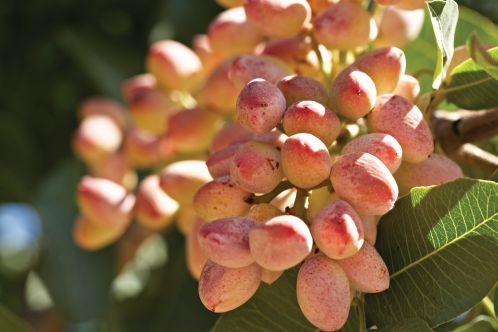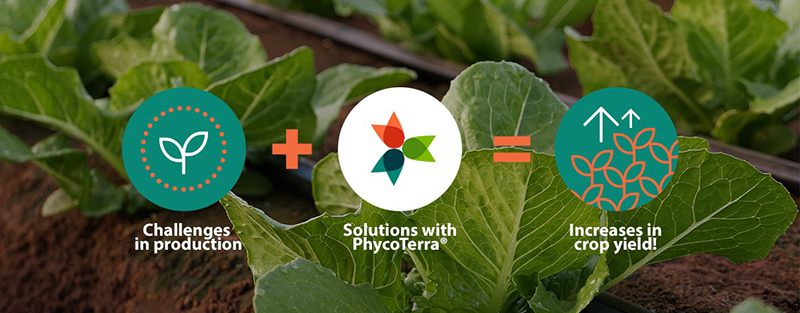2015: A Year To Forget For Pistachio Growers

This year, 2016, appears to be a far more normal year for pistachios than 2015, which saw very low yields. (Photo credit: American Pistachio Growers)
It looks like the 2016 pistachio crop will be larger than last year’s, which is a good thing because last year’s crop was shockingly small.
“We now know the exact size — 275 million pounds, 99% from California,” says Richard Matoian, the executive director of American Pistachio Growers, a voluntary grower association based in Fresno, CA. “We knew it would be an ‘off’ year, but we were expecting about 500 million pounds.”
Pistachios are notorious for their biennial production habits, but 2015 was ridiculous, says Matoian, noting the previous year’s crop was 518 million pounds. That was an ‘on’ year, but the previous off year, 2013, produced 475 million pounds. In the year before that, 2012, a total of 555 million pounds was produced.
The crop was expected to be much larger because there is a lot of new acreage coming into production, he notes. But instead of getting larger, it was the smallest crop since 2008.
“But that year we had 100,000 fewer (bearing) acres,” he notes.
Heavy Planting
In 2008 there was a total of just 120,000 acres, but buoyed by strong sales, growers have been planting many more orchards. In 2015, there were 225,000 bearing acres. This year there are about 300,000 acres in the ground, about 235,000 of those bearing acres. Pistachios are notoriously precocious, taking seven years from planting to production.
Matoian doesn’t see anything close to a repeat of 2015’s dismal production this coming year for several reasons. First off, it is an ‘on’ year. Second, there has been much more precipitation than there was in the winter of 2014-15.
But perhaps most importantly, this past winter there have been many more chill hours — temperatures under 45°F degrees that allow the trees to ‘sleep.’ In the winter of 2014-15, Fresno received 589. This winter, they expect a total of 800-900. In the Westlands district, they got just 567, and this year they had 897 by mid-February.
“It’s much more normal,” Matoian says. “As I talk to growers, they say they believe they are going to be back to a normal cropping year.”
In fact, a lot of growers are estimating as much 600 million pounds this year.
However, Matoian notes that a lot can happen between now and harvest, which is normally from early September to mid-October. Indeed, a lot of growers were caught off guard this past fall because many of the trees that looked normal had plenty of shells, but they were blanks.
 Hit And Miss
Hit And Miss
That was due to the fact that the female pistachio trees, which produce the nuts, didn’t get adequately pollinated. The male trees, which pollinate the females in a wind-aided process, didn’t mature at the same rates as the females. There is only one male tree for each 20 females, so mistimed bloom was a huge problem in some orchards.
For example, one Fresno grower saw one orchard block yield an average of 2,000 pounds per acre, but a block right across the road — which was the same variety and was farmed by the same grower — yielded an average of just 400 pounds per acre.
And he wasn’t the only one to see such a disparity. In Tulare County, some orchards averaged as much as 6,000 pounds per acre, while others averaged just 900 pounds per acre.
The 2015 average was just 1,160 pounds per acre, a half ton off the normal ‘off’ year yield of 2,200 to 2,400 pounds per acre, Matoian says.
That per-acre yield was the lowest since 1989. When you consider that the first commercial pistachio crop was harvested in 1976, it demonstrates just what an off year 2015 was.
The small crop did have a small silver lining, however. While the prices of the state’s two other main tree nut crops, almonds and walnuts, were down about $1 per pound, the lighter pistachio crop meant that prices were only off an average of 5%, Matoian says.
In addition, pistachios have other attributes that can give the crop advantages in the future.
“They can better withstand drought and poorer soil conditions,” he says. “They can tolerate soils that are higher in salt and alkali.”
Iran Is Not A Threat – Yet
The world’s other major pistachio production region is Iran, which recently complied with nuclear orders so the sanctions against their importation into the U.S. were removed.
The sanctions have been put into place three times in the past, says Richard Matoian, the executive director of American Pistachio Growers. It was originally done because of the hostage crisis in 1979, and again in 1987 and 2010.
In 1986 the U.S. pistachio industry was able to put anti-dumping regulations into place because the Iranians were selling pistachios lower than the cost of production, he says. The U.S. Department of Commerce placed a 300% tariff on the Iranian pistachios.
But because the nuclear sanctions were recently lifted, the Department of Commerce will do a sunset review of the tariff in the next 3 to 10 months, says Matoian.
“The (U.S.) industry will engage in that process,” he says. “We will have to show that it will damage U.S. producers.”
Industry leaders have been having quite a few meetings on the topic of late because it’s a complicated issue.
First, they have to consider the cost of defending the tariff, then prove that it will indeed harm the industry.
“Also, it’s now a worldwide marketplace, and maybe we don’t care as much,” says Matoian, noting that 65% of the U.S. crop is exported.
In addition, he says the U.S. growers would stake their claim that their pistachios are simply better.
“We would maintain we have a higher quality product,” Matoian says, “and our food safety laws are much more stringent.”









